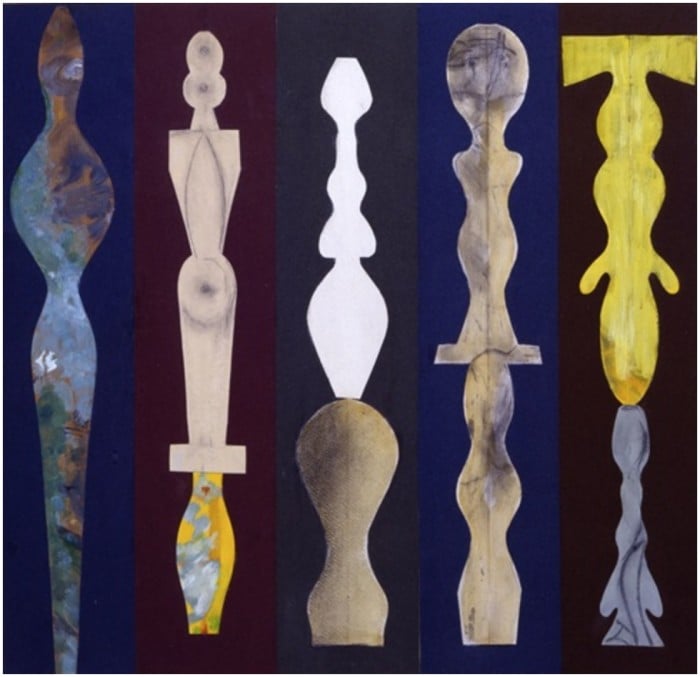Art World
100 Years Ago Today, Dada Was Born at Cabaret Voltaire in Zurich
Without Dada art as we know it wouldn't exist.
Without Dada art as we know it wouldn't exist.
Henri Neuendorf

100 years ago today, on February 5, 1916, the now-legendary Cabaret Voltaire—the artist hangout that gave birth to the Dada movement—was opened in Zurich.
Dada—which advocated coincidence as a leading creative principle—deliberately contravened all known and traditional artistic styles at the time. It was championed by Hugo Ball, Tristan Tzara, Richard Huelsenbeck, Hans Arp, Sophie Taeuber-Arp, and Marcel Janco.
It all started with a “Dada Evening” organized by Ball and Emmy Hennings who opened the popular nightclub frequented by Zurich’s artist community.

Marcel Słodki designed the poster for the first evening at Cabaret Voltaire, in 1916
Photo: Kunsthaus Zurich via Wikimedia Commons
Several artists rattled off a bizarre and chaotic repertoire of performances which reflected the chaos and destruction caused by World War I, which was raging outside of neutral Switzerland’s borders at the time.
Ball described Switzerland as a “Birdcage surrounded by roaring lions,” and the Dada Evening he organized was the artistic reaction to what was going on in war-torn Europe.

Jean (Hans) Arp Les cinq (1962)
Photo: Michael Werner Gallery via artnet
“Several factors contributed to the development at the time,” writes Martin Mittelmeier in his recent book Dada: Eine Jahrhundertgeschichte [A Century of History] . Even before the war, modernization and innovation led to unprecedented growth and developments, especially in industry and the economy.
According to Mittelmeier, the themes featured in news reports at the time were surprisingly similar to today’s. “The talk was of people being overwhelmed by the increasingly confusing world around them. The world was simultaneously becoming more complex and multifaceted, with out-of-date political parameters.”
Art has often reacted to the turmoil of war and changing social conditions, with avant-garde movements such as Expressionism, Cubism, and Futurism. But no movement reworked the leading principles of art creation as Dadaism did.

Raoul Hausmann Mechanical Head (The Spirit of Our Age) (ca. 1920)
Photo: Wikimedia Commons
The legacy of Dada is far reaching. Aside from the collages and photomontage created by the famous Dadaists such as Hans Arp, the movement encouraged the perception of art as a total creative practice. Everyday objects were declared artworks, performances were accepted as visual art, and spoken word and poetry were reclassified.
The radical redefinition of what art is made subsequent movements such as Surrealism, Fluxus, not to mention Punk, and our understanding of contemporary art possible.
The movement’s centennial celebrations will be marked by a slew of exhibitions around the world, but Zurich, as the birthplace of Dada, offers an ongoing program all throughout the year.